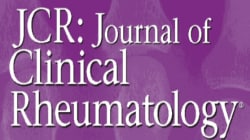
“Cannabidiol (CBD), the major non-psychoactive constituent of Cannabis sativa, has received attention for therapeutic potential in treating neurologic and psychiatric disorders.
Recently, CBD has also been explored for potential in treating drug addiction. Substance use disorders are chronically relapsing conditions and relapse risk persists for multiple reasons including craving induced by drug contexts, susceptibility to stress, elevated anxiety, and impaired impulse control. Here, we evaluated the “anti-relapse” potential of a transdermal CBD preparation in animal models of drug seeking, anxiety and impulsivity.
Rats with alcohol or cocaine self-administration histories received transdermal CBD at 24 h intervals for 7 days and were tested for context and stress-induced reinstatement, as well as experimental anxiety on the elevated plus maze. Effects on impulsive behavior were established using a delay-discounting task following recovery from a 7-day dependence-inducing alcohol intoxication regimen.
CBD attenuated context-induced and stress-induced drug seeking without tolerance, sedative effects, or interference with normal motivated behavior. Following treatment termination, reinstatement remained attenuated up to ≈5 months although plasma and brain CBD levels remained detectable only for 3 days. CBD also reduced experimental anxiety and prevented the development of high impulsivity in rats with an alcohol dependence history.
The results provide proof of principle supporting potential of CBD in relapse prevention along two dimensions CBD: beneficial actions across several vulnerability states, and long-lasting effects with only brief treatment. The findings also inform the ongoing medical marijuana debate concerning medical benefits of non-psychoactive cannabinoids and their promise for development and use as therapeutics.”
https://www.nature.com/articles/s41386-018-0050-8
“Non-psychoactive cannabis ingredient could help addicts stay clean. Preclinical study using rats shows that Cannabidiol can reduce the risk of relapse” https://www.sciencedaily.com/releases/2018/03/180323104821.htm
“Non-psychoactive cannabis ingredient could reduce risk of relapse among recovering addicts. A preclinical study in rats has shown that there might be value in using a non-psychoactive and non-addictive ingredient of the Cannabis sativa plant to reduce the risk of relapse among recovering drug and alcohol addicts.” https://www.news-medical.net/news/20180323/Non-psychoactive-cannabis-ingredient-could-reduce-risk-of-relapse-among-recovering-addicts.aspx










